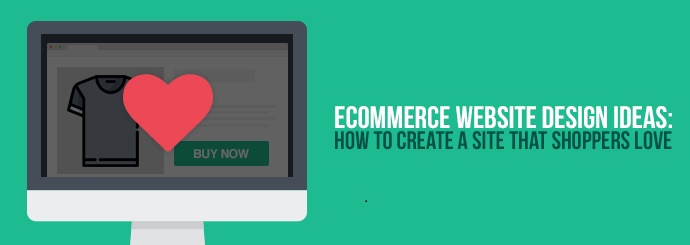
When you're trying to succeed in the world of ecommerce, there are lots of different factors to consider. Nowadays, most online shoppers expect ecommerce websites to meet each of the following criteria:
- Secure checkout system
- Appealing, mobile-friendly design
- Minimal loading times
- User-friendly site navigation
- Extensive product information (so that people know exactly what they're buying)
- Competitive prices
- Positive feedback from other customers
- Ability to contact the seller with ease
Consumer trust is key to the success of any ecommerce website, and you will probably need to tick all of the above boxes in order to earn the trust of the average online shopper in this day and age.
With this in mind, here are three helpful ecommerce website design ideas from the ecommerce experts here at Designer Websites:
Use engaging, good-quality product images.
Most people won't purchase something online unless they're certain of what they're paying for. Detailed product descriptions are important, but a picture is worth a thousand words, and a few good images will generally sell your product a lot more effectively than a few paragraphs of text.
Both quality and quantity are important here. You need detailed images that make your items look enticing, but you should also try to offer a variety of images for each product. Try to cover all bases: one no-frills image that clearly shows what the product looks like; one or two photos of the product in use; a picture to show what the product looks like in its packaging, and another to show what's actually inside the box. You get the idea - your product images should aim to answer every question the average customer might ask.
Of course, you should also ensure that the images on your website aren’t so large that they slow the whole page down. Loading speed is a critical issue for Internet users these days, and even an extra second or two can have a disastrous impact on your website’s conversion rate, so make sure those beautiful images are optimised for a smooth, speedy browsing experience!
Put lots of emphasis on customer reviews.
We all seek approval from other people, and this tendency can be clearly seen in the behaviour of online shoppers: by and large, we're far more likely to buy something if several other people say they did the same and had a good experience.
For this reason, you not only need to gather reviews from your satisfied customers, you need to put those reviews right where everyone will see them. Your ecommerce website design should ensure that every potential customer sees all the 5-star ratings and positive comments that your other customers have left. It should also be clear how many people have reviewed each product, since a 5-star average rating is a lot more persuasive if multiple people have given the product full marks.
Shoppers see positive reviews as seals of approval - they have a hugely reassuring effect on the potential buyer, so make sure those ratings and recommendations aren't buried way down at the bottom of the page.
Make it easy for users to find what they're looking for.
The modern Internet user is an impatient creature, and the more barriers you put between them and what they're looking for, the more likely it becomes that they'll leave your website and shop with one of your competitors instead. As we mentioned before, it's important to ensure that your pages load quickly, but it's just as important to make the journey from one page to the next as seamless as possible.
This can be achieved in a number of different ways:
- Make sure your website's search function works properly, and ensure that the search bar is easy to find no matter what page the user is on
- List 'related products' (or similar) on your product pages. That way, if the user decides that the product they're looking at isn't quite what they need, it's easy for them to find a suitable alternative.
- Put important information - your delivery options, your returns policy, and so on - somewhere that's reasonably easy to spot so users don't waste time trying to find it.
- When designing your site hierarchy (i.e. your categories and sub-categories), put yourself in the shoes of your average user and try to come up with a sensible structure that's easy to navigate even if you've never seen it before.
- Make your homepage as helpful as possible. It may be tempting to simply fill your homepage with the products you're most keen to sell, but this may not be best for the user. Again, you should endeavour to put yourself in their shoes: if someone arrives on your homepage, are they looking for a specific product or piece of information, or are they just browsing for ideas? Do they want to know about your company, or do they want to see the newest additions to your range?
Essentially, your aim should be to minimise the number of clicks / actions the user has to perform in order to achieve their goal.
If you need a bespoke ecommerce website designed by professionals, we at Designer Websites are the people to call. Request an ecommerce quote here!